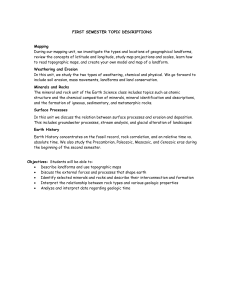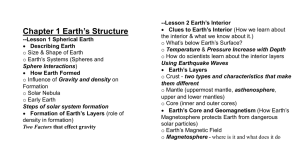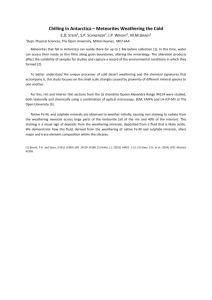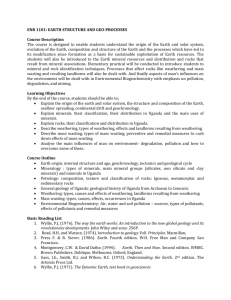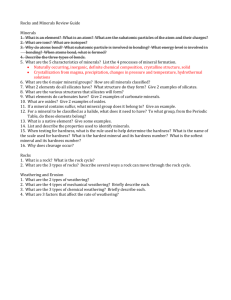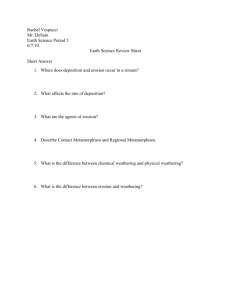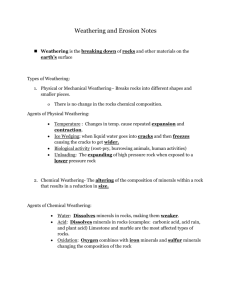Exploring Earth Common Assessment Study Guide The following
advertisement
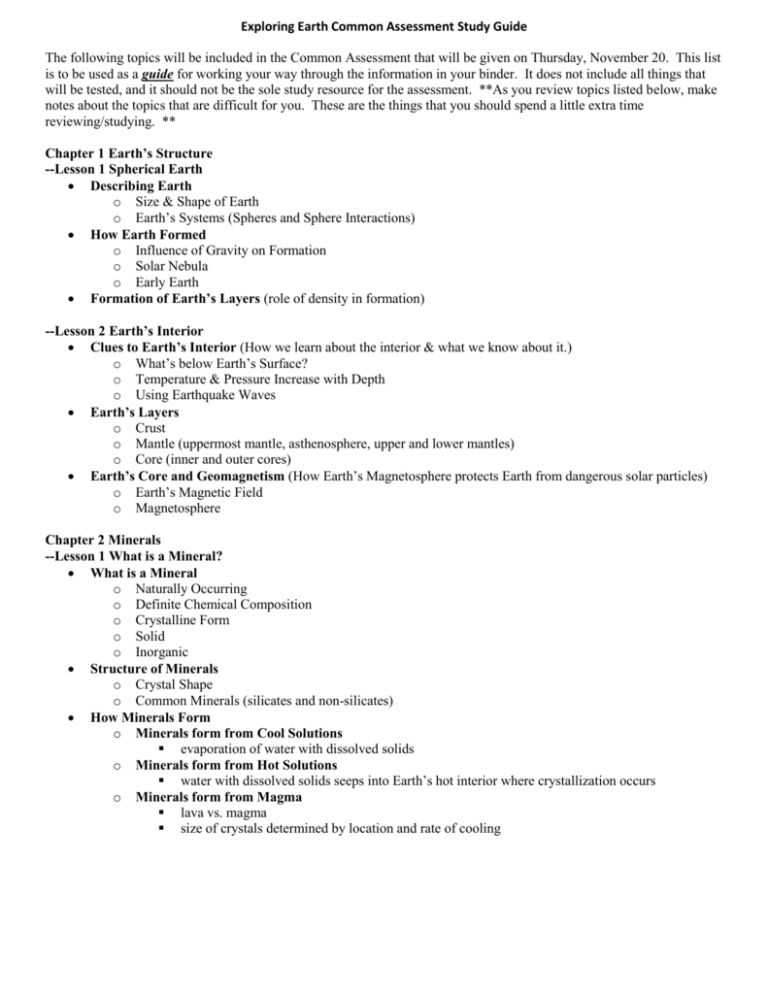
Exploring Earth Common Assessment Study Guide The following topics will be included in the Common Assessment that will be given on Thursday, November 20. This list is to be used as a guide for working your way through the information in your binder. It does not include all things that will be tested, and it should not be the sole study resource for the assessment. **As you review topics listed below, make notes about the topics that are difficult for you. These are the things that you should spend a little extra time reviewing/studying. ** Chapter 1 Earth’s Structure --Lesson 1 Spherical Earth Describing Earth o Size & Shape of Earth o Earth’s Systems (Spheres and Sphere Interactions) How Earth Formed o Influence of Gravity on Formation o Solar Nebula o Early Earth Formation of Earth’s Layers (role of density in formation) --Lesson 2 Earth’s Interior Clues to Earth’s Interior (How we learn about the interior & what we know about it.) o What’s below Earth’s Surface? o Temperature & Pressure Increase with Depth o Using Earthquake Waves Earth’s Layers o Crust o Mantle (uppermost mantle, asthenosphere, upper and lower mantles) o Core (inner and outer cores) Earth’s Core and Geomagnetism (How Earth’s Magnetosphere protects Earth from dangerous solar particles) o Earth’s Magnetic Field o Magnetosphere Chapter 2 Minerals --Lesson 1 What is a Mineral? What is a Mineral o Naturally Occurring o Definite Chemical Composition o Crystalline Form o Solid o Inorganic Structure of Minerals o Crystal Shape o Common Minerals (silicates and non-silicates) How Minerals Form o Minerals form from Cool Solutions evaporation of water with dissolved solids o Minerals form from Hot Solutions water with dissolved solids seeps into Earth’s hot interior where crystallization occurs o Minerals form from Magma lava vs. magma size of crystals determined by location and rate of cooling --Lesson 2 How are Minerals Identified? Physical Properties o Color o Luster o Streak o Hardness o Cleavage & Fracture o Density o Special Properties --Lesson 3 Sources and Uses of Minerals Mineral Resources o Metallic Mineral Resources o Rare Minerals o Nonmetallic Mineral Resources o Gemstones Chapter 3 Rocks --Lesson 1 Rocks & the Rock Cycle Rocks o Texture o Composition Three Major Rock Types o Igneous Rocks o Sedimentary Rocks o Metamorphic Rocks o The Rock Cycle Uplift, weathering, sediments, erosion, deposition, compaction, cementation, subduction, melting, magma, cooling & crystallization, extreme temperature and pressure, etc.) Chapter 4 Weathering and Soil --Lesson 1 Weathering Weathering and Its Effects Mechanical Weathering o Examples of Mechanical Weathering o 4 Types of Mechanical Weathering o Surface Area Chemical Weathering o Water and Chemical Weathering o Dissolving by Acids o Oxidation What Affects Weathering Rates? Chapter 5 Erosion & Deposition --Lesson 1 The Erosion & Deposition Process Reshaping Earth’s Surface Continual Process of Change o Weathering o Erosion o Deposition Constructive and Destructive Forces Interpreting Landforms o Landforms Created by Erosion o Landforms Created by Deposition o Comparing Landforms


